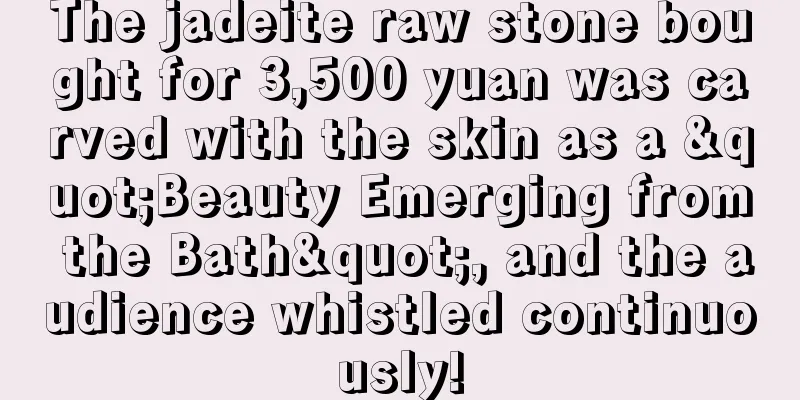How to judge the quality of jadeite?

|
From the late 20th century to the present, the concept of treasure collection in prosperous times has led to a growing craze for jadeite collection. Jadeite has gradually evolved from a piece of jewelry to embellish people's lives to a messenger that carries and spreads jade culture. Detecting the authenticity of jade and judging its quality have become the primary issues in jade collection. Myth 1: The older the jade, the better Many collectors are particular about collecting "ancient jade", but there is no distinction between "ancient" and "modern" jadeite collection. Jade was introduced to China during the Qing Dynasty. At that time, there were not many jade raw materials and the identification ability was poor, so the texture of jade that was older was relatively poor, and it was far less beautiful than the jade jewelry mined and produced in modern times. Myth 2: The ones that don’t change color are A-grade goods Some jadeite with good dyeing technology can maintain its bright color for up to 10 to 20 years. However, some red or yellow jade may change color if not properly stored, such as being placed in an environment with excessively high temperatures for a long time, or being soaked in acidic or alkaline chemicals. Myth 3: Green jade is good Emerald green jade is the best quality among A-grade jade, but not all jade is green. Some jade will form a bright "jade" color due to the infiltration of iron. If such jade has high transparency and good texture, it will also be popular in the market. Myth 4: The more complex the process, the better “Simplicity is beauty.” Many high-quality jades are often made into very simple bracelets or ring faces without any carving; while some jades with impurities or cracks are often carved into figures or scenes by skilled craftsmen to cover up their natural imperfections. Myth 5: The more uniform the green, the better In the market, you can often see some jadeite that is emerald green all over, with bright color and very even distribution. In fact, jadeite with extremely uniform color is either unaffordable or fake. The interior of jade is composed of a collection of granular minerals, so its green color is mostly distributed locally. There will be a boundary between green and non-green, and it is rarely consistent throughout. Myth 6: The rarer the item, the more valuable it is Natural minerals sometimes form very special patterns. For example, some minerals are arranged in shapes similar to animals or mountains and rivers. Some collectors often hype this kind of jade as a rare treasure. In fact, in addition to being rare, this kind of jade must conform to aesthetic principles and have good texture to be truly "valuable".
|
<<: Why is fine jade called “fine”?
>>: If you suffer a loss when buying jadeite, it is because you are not sharp enough.
Recommend
Is there black jade?
The black jade mentioned here refers to jade with...
Jade Market Investment Analysis
1. Jade from the perspective of value By visiting...
How well do jade and cheongsam match? Perfect match!
The beauty of cheongsam transcends time and is a ...
Understanding A, B, B+C and C grade jadeite
Who among those who like to collect or wear ornam...
How to choose the ideal jade ring face? Here comes the “key point”!
Although the ring face is small, it is the most b...
Learn these three tricks, it is not difficult to identify the authenticity of jade with the naked eye
Trick 1: Look at the gloss Natural jade (A-grade ...
Do you know the difference between A, B and C grade jadeite?
I believe that many friends will hear others ask ...
3 points to help you identify jadeite, a must-read for beginners
The correct definition of jadeite is a fibrous ag...
Whether the jade bracelet you choose is amazing or not, just look at these three points
Jade bracelets are probably the jade jewelry that...
Jade carving art - why every wealthy family has jade ornaments
Jade ornaments are a large category of jade acces...
How to distinguish the authenticity of jadeite
Now more and more people are beginning to like we...
Choosing jadeite raw stones, if you don’t understand these 8 judgments, you will fail
The raw jadeite stones are all wrapped in big sto...
Legendary Jadeite - Hutton-Mdivani Jadeite Bead Necklace
Let’s take a look at a piece of extremely well-kn...
What is the original color of jade? How does it differ from the secondary color of jadeite?
Jadeite, the "king of jade" deeply love...
The relief in jade makes the jade "alive"
In order to show the spatial sense, overall sense...









